Each spring, when daffodils and other flowers emerge in gardens, tiny ocean plants called phytoplankton also undergo a surge of production and rapid growth near the surface of the Sargasso Sea. Although each marine phytoplankton is small—tinier than the period at the end of this sentence—it carries tremendous responsibilities.
A Day to Highlight Science, Research, and Education
May 13, 2017
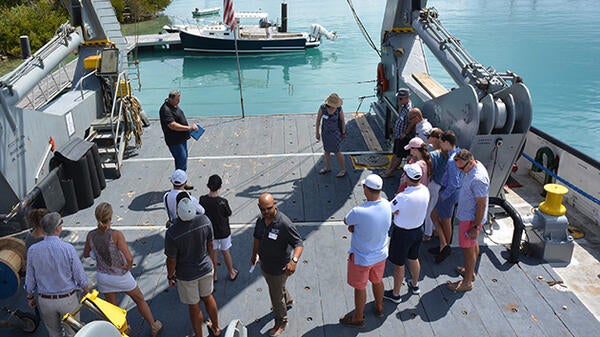
More than 50 people spent April 29 at BIOS during the Young Presidents’ Organization’s Family Day, providing an opportunity for the Institute to highlight research and education activities. The event included tours of BIOS’s research vessel Atlantic Explorer (by captain George Gunther pictured above); BIOS faculty member Andrea Bodner’s science laboratories (pictured below); and the MAGIC Room, for a brief talk by Institute director Bill Curry and a look at the glider program.
A Flower, a Ship, and a Way to Conduct Science
May 13, 2017
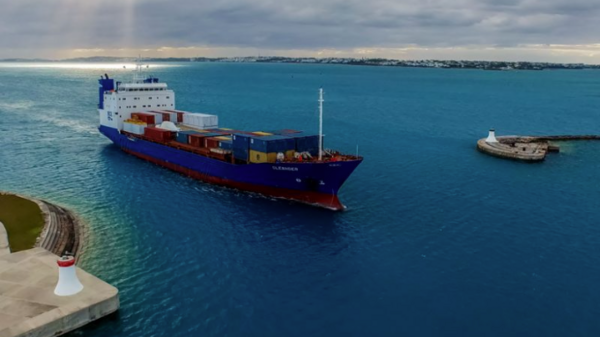
More than a flower, the Oleander is a container ship that provides weekly service between Hamilton, Bermuda, and Port Elizabeth, N.J. In so doing, the ship traverses water from three very widely separated domains: cold, fresh subpolar water from the Labrador Sea; hot, salty Gulf Stream water from the tropics via the Gulf of Mexico; and the large body of warm, salty subtropical water south of the Gulf Stream.
A New Start for Waterstart
May 13, 2017
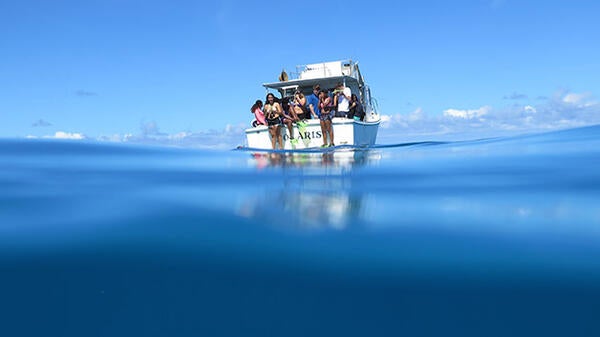
For the last 12 years, hundreds of students have descended upon BIOS during the summer months for a unique program that combines experiential education with SCUBA training: the Waterstart program. Founded in 2001 by marine science educator JP Skinner, the program evolved from a small camp offered for just two weeks during the summer to multiple weeklong camps throughout the summer months.
A Conversation with Rob Cawthorn, BIOS Trustee Emeritus
May 13, 2017
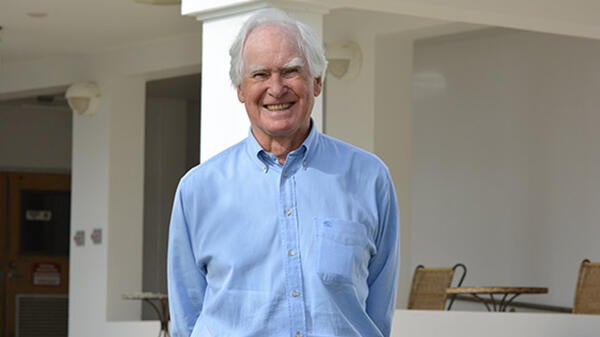
Growing up in England, Rob Cawthorn dreamed of a farming life, but instead spent nearly four decades in the pharmaceutical, biotechnology, and animal health industries. He visited Bermuda for annual meetings and vacations while working for a company in Canada, and—smitten with the island’s climate and proximity to the U.S. and Europe—retired here in 1999 with his wife, Sue. That year he learned about BIOS [then the Bermuda Biological Station for Research] and soon after began serving on its board.
They Came. They Saw. They Brought Robots.
May 13, 2017
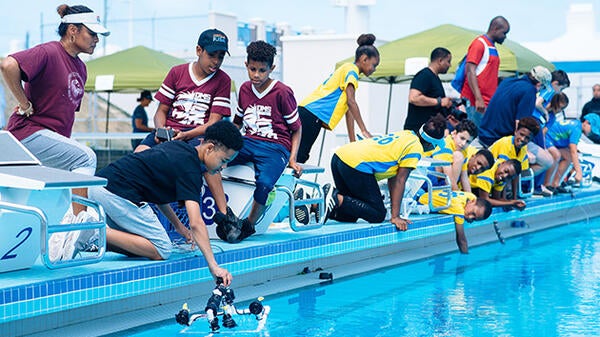
The pool at the National Sports Centre hosts numerous aquatic competitions throughout the year, but perhaps none as unique as the MATE Bermuda Regional Challenge. The annual challenge, organized by BIOS’s Ocean Academy and supported by lead donor HSBC, is the culmination of months of work by teams of students on the design, construction, and operation of remotely operated vehicles, or ROVs. The challenge is also the final event in the BIOS Mid-Atlantic Robotics IN Education (MARINE) program, which uses a focus on marine robotics to bring science and technology curricula into classrooms around the island.
Lights, Cameras… Sea Butterflies
June 17, 2017
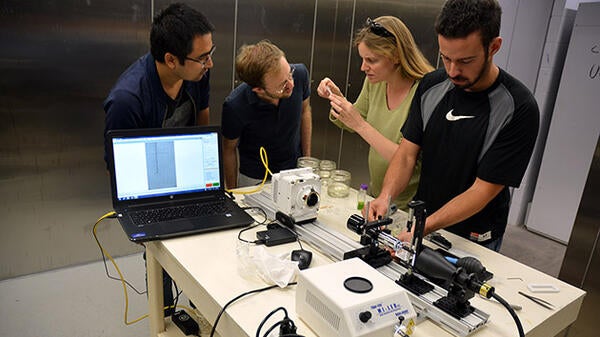
Sea butterflies are tiny marine snails but, instead of a traditional foot, they have a pair of wing-like appendages. These propel them on their daily migration from the sea surface, where they feed, down to deeper, darker waters to hide from predators.
The Magic of the Marianas and Micronesia
June 17, 2017
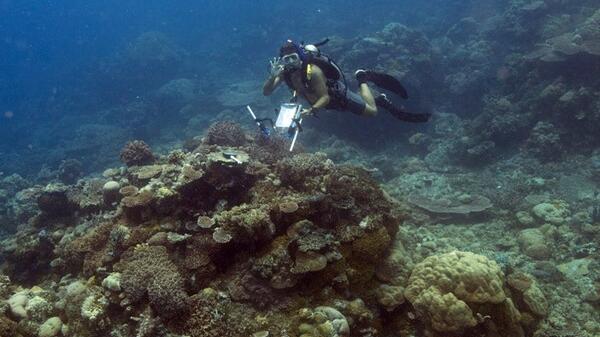
Many people are familiar with—or have at least heard of—the Mariana Trench. Located in the western Pacific Ocean, this crescent-shaped feature on Earth’s crust is the deepest part of the world’s ocean, reaching a maximum depth of 36,070 feet (10,994 meters) in an area known as “Challenger Deep.”
A New Opportunity for a Familiar Face
June 17, 2017
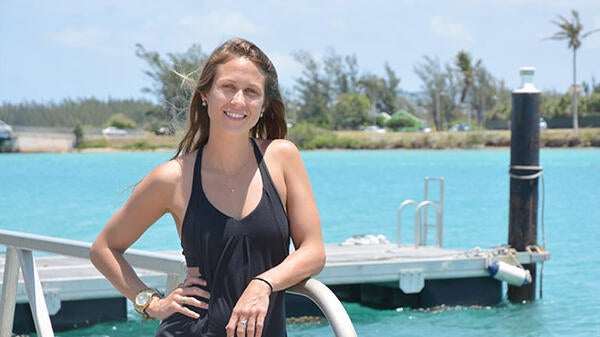
In 2013, Amanda Alker—then a student at Florida Atlantic University—came to BIOS as part of the National Science Foundation’s (NSF) Research Experiences for Undergraduates (REU) program. This annual opportunity provides funding for undergraduate students to conduct supervised research at dozens of U.S.-based research institutes and universities. During her four months at BIOS, Alker investigated antibiotic resistance in bacteria associated with Bermuda’s largest sewage outfall.
Local Upbringing, Global Experience
June 17, 2017
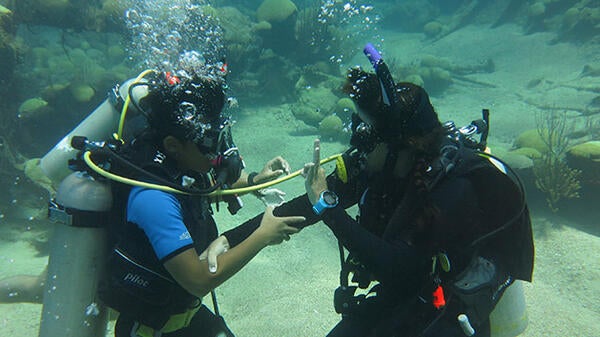
On any given day, you’re likely to see Kyla Smith down at the BIOS waterfront corralling students onto a boat for a trip to Nonsuch Island; preparing materials for a lecture and subsequent lab on marine plankton; or leading a tour of the BIOS labs and research facilities. Smith, 30, is using her experiences and expertise—which includes certification as a SCUBA instructor—in a role she never imagined: marine science educator. As an Ocean Academy program assistant, she is an integral part of the education team at BIOS who is responsible for teaching school students about the importance of the ocean and their role in marine exploration and conservation.
